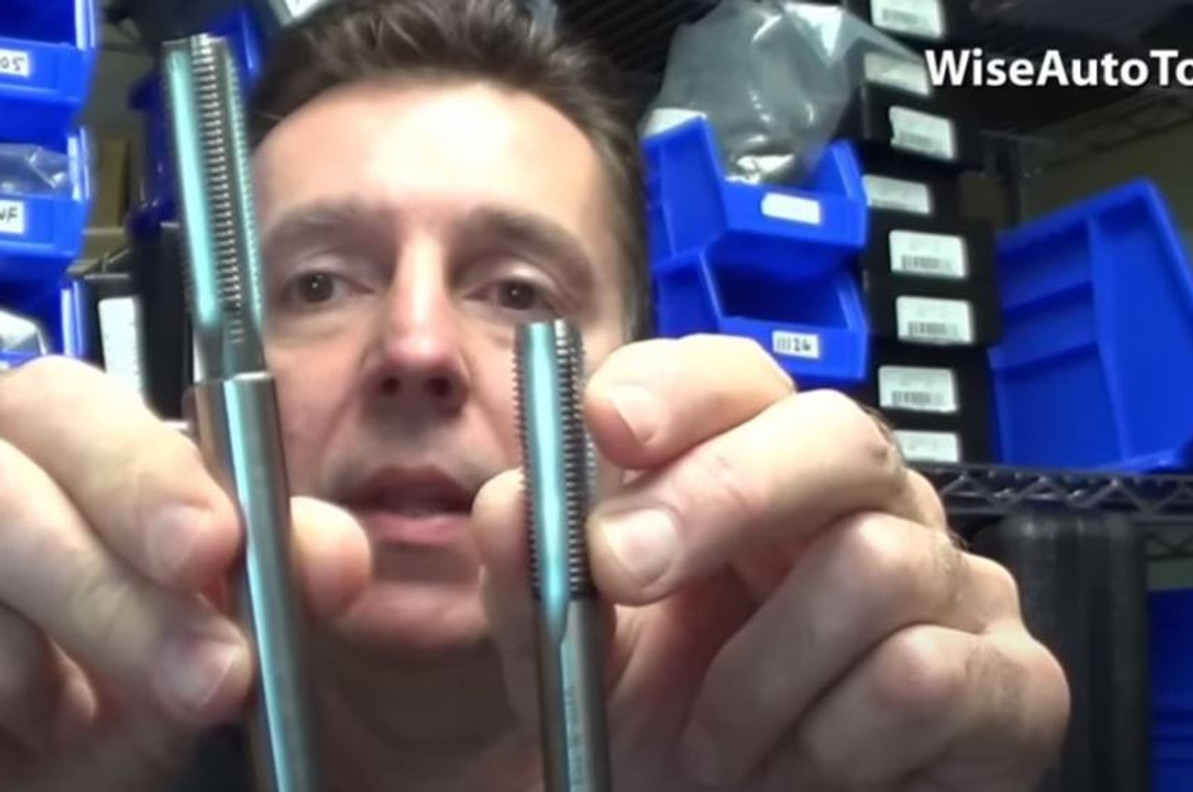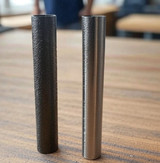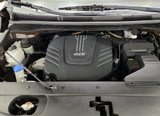Benefits of TIME-SERT Thread Repair Kits for Cylinder Head Bolts
WiseAutoTools.com Summary: When it comes to repairing cylinder heads, eliminating line-up dowels can lead to several potential problems. Line-up dowels ensure precise alignment of the cylinder head with the engine block, which is crucial for proper engine function and performance. Using a kit like Time Sert that does not eliminate the use of line-up dowels is recommended. Additionally, using inserts with fine threads instead of coarse threads can provide better strength, precision, and reliability. Time-Sert's approach of using a smaller OD insert with finer threads and synchronized threads provides a safer and more effective repair solution. The self-locking mechanism provided by Time-Sert also ensures a more secure and reliable thread repair compared to inserts that only bottom out in the hole.
Eliminating line-up dowels for cylinder heads with a thread repair kit can create several potential problems.
Firstly, line-up dowels ensure precise alignment of the cylinder head with the engine block, which is crucial for proper functioning and performance of the engine. Without them, there is a risk of misalignment which can cause leaks, overheating, and other engine problems.
Choose a kit like Time Sert that does not eliminate the use of line-up dowels. The original dowels are used for first time repairs. When doing a second time repair when a previous repair has been made and failed leaving the hole bigger, the Big-Sert kit is used and implements larger dowels.
Beware of using head bolt thread repair kits that use coarse threads. Using coarse threads on inserts for cylinder head repair can lead to a few issues:
- Reduced strength: Coarse threads have less contact surface area, which can result in reduced strength compared to fine threads. This can be a concern in high-stress applications like cylinder heads.
- Less precision: Coarse threads are less precise than fine threads, which can make it harder to achieve the proper torque and thread engagement when installing the insert. This can lead to issues with the insert coming loose or failing over time.
- Increased likelihood of cross-threading: Coarse threads are more likely to cross-thread during installation, which can damage the cylinder head and make it difficult or impossible to properly install the insert.
- Poor sealing: In some cases, coarse threads can cause a poor seal between the insert and the cylinder head. This can result in leaks or other issues with engine performance.
For these reasons, many experts recommend using inserts with fine threads for cylinder head repair whenever possible. Fine threads provide better strength, precision, and reliability than coarse threads, making them a better choice for high-performance or high-stress applications like cylinder heads.
Question - Are coarse threads really more easy to cross thread?
Yes, coarse threads are generally more prone to cross-threading than fine threads. This is because the larger pitch of coarse threads means that the threads are farther apart, making it more difficult to align them correctly during installation. As a result, there is a higher likelihood of the threads being forced together at an angle, which can cause them to bind or strip. In contrast, fine threads have a smaller pitch and are closer together, which makes it easier to get them properly aligned during installation and reduces the risk of cross-threading.
It's important to note that the likelihood of cross-threading also depends on the skill and experience of the person doing the installation, as well as the quality of the tools and equipment being used. Even with fine threads, improper installation can still result in cross-threading and other issues.
- Compatibility: A thread repair kit system that is approved by several automobile manufacturers is designed to be compatible with the specific make and model of vehicle, ensuring a proper fit and function. In contrast, a one size fits all kit may not be suitable for all applications, leading to improper fitment and potentially causing further damage to the engine.
- Quality: Thread repair kit systems that are approved by automobile manufacturers have been rigorously tested and meet strict quality standards. This ensures that the kit is made from high-quality materials and is designed to withstand the rigors of engine operation.
- Reliability: Using a thread repair kit system that is approved by several automobile manufacturers provides greater assurance of reliability compared to a one size fits all kit. These kits have been used in thousands of engines and have a proven track record of success.
- Warranty: Thread repair kit systems that are approved by automobile manufacturers often come with a warranty, which provides added peace of mind in the event that something goes wrong. In contrast, a one size fits all kit may not come with any warranty, leaving you to bear the cost of any repairs or replacements.
Overall, using a thread repair kit system that is approved by several automobile manufacturers is the safer and more reliable choice compared to a one size fits all kit. It ensures compatibility, quality, reliability, and often comes with a warranty, making it a smart investment for engine repair. Time-Sert's approach of using a smaller OD insert with finer threads provides a safer and more effective repair solution and removes only as much material as absolutely necessary. The opposite of a one size fits all approach that removes a large amount of the block regardless of the bolt size. This approach ensures that a block replacement would be necessary if the threads fail because the largest size has already been used. It should noted that those type of kits are a "Last Chance" for repair.

- Precise thread engagement: The "timed" and synchronized threads ensure precise thread engagement, which helps to reduce the risk of thread failure and other issues. This is because the threads are designed to engage at the same time, allowing for a more secure and stable connection.
- Better load distribution: The synchronized threads also help to distribute the load more evenly, which reduces the stress on the threads and the surrounding material. This helps to prevent thread failure and other issues that can occur when the load is unevenly distributed.
- Improved torque retention: The precise thread engagement and load distribution provided by the "timed" and synchronized threads also help to improve torque retention, which can help to ensure that the repair remains secure and stable over time.
- Easier installation: The "timed" and synchronized threads also make installation easier and more efficient, as the threads are designed to engage smoothly and evenly. This can help to reduce the risk of cross-threading and other issues that can occur during installation.
Overall, Time-Sert's "timed" and synchronized threads offer several advantages, including improved thread engagement, better load distribution, improved torque retention, and easier installation. These features help to ensure a more secure and stable repair, while also making the installation process easier and more efficient.
In contrast, inserts that only go to the bottom of the hole may not provide the same level of security or reliability. Without a self-locking mechanism, these inserts may be more prone to backing out or coming loose, which can lead to issues like leaks, loss of torque, or even engine failure.
The self-locking mechanism provided by TIME-SERT® helps to ensure that the insert remains securely in place, even in high-stress applications. This can be particularly important in critical applications like cylinder heads or engine blocks, where any failure or loss of torque can have serious consequences.
Overall, the self-locking mechanism provided by TIME-SERT® is a key advantage, as it helps to provide a more secure and reliable thread repair compared to inserts that only go to the bottom of the hole.
Question - Does the expansion of the bottom cause any potential problems?
No, the expansion of the bottom of the TIME-SERT® insert during installation does not cause any problems. In fact, it is an intentional part of the installation process and is designed to provide a more secure and reliable thread repair.
During installation, the bottom internal threads of the insert are cold rolled, which causes them to expand and engage with the mating external threads in the base material. This effectively locks the insert in place and helps to prevent it from backing out or coming loose over time.
The expansion of the bottom of the insert does not cause any damage or problems, as it is designed to be within the elastic limit of the material. This means that it will expand and contract within the material's natural yield point, without causing any damage or deformation.
Overall, the expansion of the bottom of the TIME-SERT® insert during installation is an intentional part of the process and is designed to provide a more secure and reliable thread repair. It does not cause any problems or damage to the base material.
Here's a lot of common questions in this video series that we've answered over the years.
If you want to ensure a wise choice for your head bolt thread repair needs, look no further than WiseAutoTools.com. Our product listings feature some of the best head bolt thread repair kits available, designed to provide a lasting and effective repair for your vehicle. If you have any questions or need assistance selecting the right kit for your application, don't hesitate to call us at 800-734-8665 or use our Contact Form to provide your details.
Recent Posts
-
Debunking Myths: Is Stainless Steel Just Carbon Steel with Rust Protection?
Hello, I'm Dennis Bandy, owner of Wise Auto Tools and a Master Automotive Technician with many years …15th Jul 2025 -
Head Bolt Stripping in Kia and Hyundai Engines: How Common Is It and How to Fix It
A customer recently emailed us with a great question: “What percent of Kia vehicles would you say ha …9th Jul 2025 -
Pentastar 3.6L Head Bolt Thread Repair on a Budget
We recently received a great question from Michael, a DIYer facing a common problem of stripped thre …19th Mar 2025




